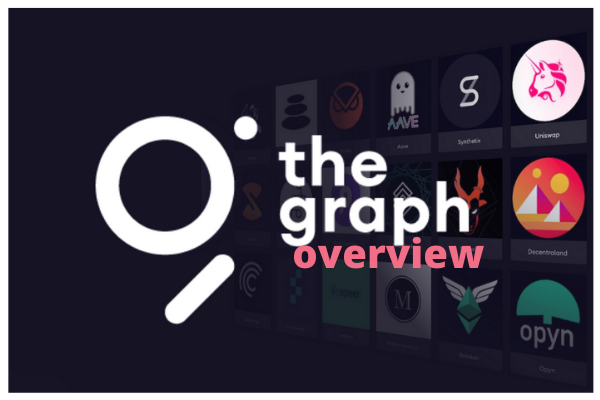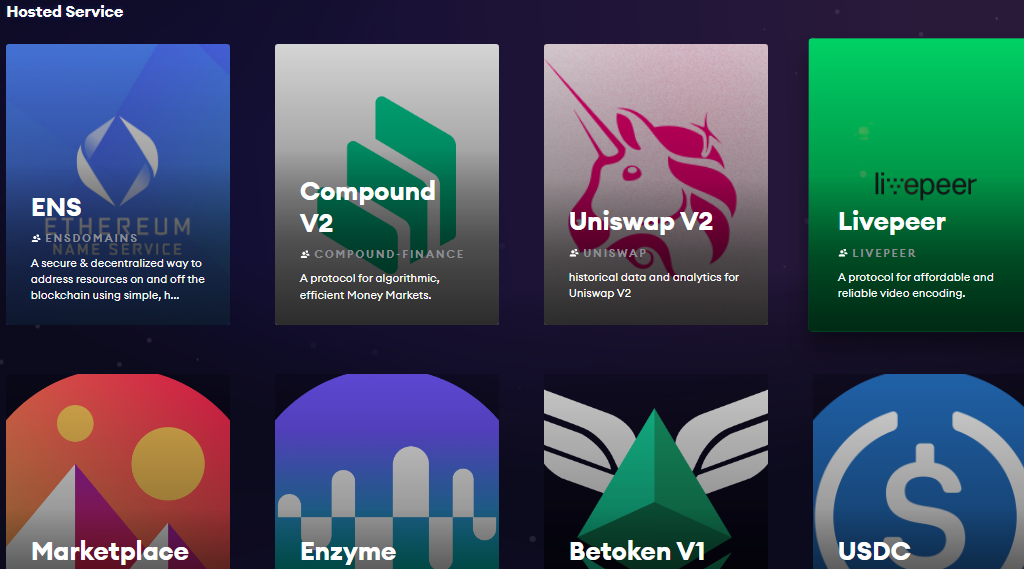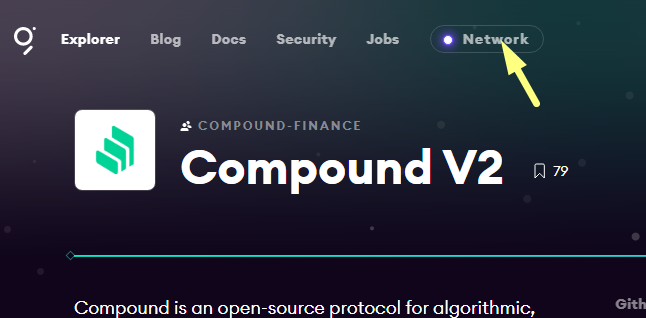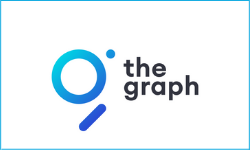Today’s post is a detailed review of The Graph, an indexing protocol for the Ethereum blockchain.
With Graph, developers can easily fetch the data they need on any DApp like history and number of transactions.
Imagine being able to access all the information on Uniswap, Decentraland, MakerDAO, etc. in a few seconds.
Not just that, the Graph network also rewards participants with GRT tokens from time to time.
Sounds interesting, huh?
Keep reading to learn more about the Graph and its GRT tokens.
Post Summary
This review is divided into the following subheadings:
- The Graph Overview
- How The Graph Works
- Rewards Of Roles On The Graph Network
- GRT Tokenomics
- Customer Support And Public Opinion
- How To Get Started On The Graph
- The Graph Future Plans
- FAQs
- Conclusion
A click on any item above will reveal its details immediately.
Happy reading!
1. The Graph Overview

The Graph is an indexing protocol that provides needed data on DApps hosted on the Ethereum blockchain.
Think of it as a marketplace for all data that is on Ethereum.
It was founded by Yaniv Tal, Jannis Pohlmann, and Brandon Ramirez in June, 2018.
This protocol was designed to save developers money and time.
How? You may ask.
Sourcing for data on DApps and their smart contracts is tasking, costly, and sometimes unfruitful.
And developers need these data to build new DApps and improve on old ones.
The Graph makes this data accessible to developers at a lower cost and in a short time.
Here’s an instance;
Say, I want to create a marketplace integrated app where users can find the parcels of land available on Ethereum’s virtual worlds.
I will need to fetch data from DApps like Decentraland and Sandbox.
For example, history and number of land parcels sold.
Since Ethereum is Open-source, my app should be able to fetch the data it needs from the blockchain.
But this could take hours and even days. Thereby, depriving traders of the information they need to make a quick choice.
The Graph solves this problem by providing my app the data it needs in an instant.
Cool, right?
Join me in the next section to see how the magic is done.
2. How The Graph Works
To understand how this protocol works, let’s look at some relevant terms:
Subgraph – a dataset representing a DApp. It contains a description of specific smart contracts within that DApp and other relevant values.
Example: Subgraphs for Uniswap, Compound, ENS, USDC, Livepear, Synthetix, Aave, etc.
Graph explorer – the site where developers can place request for data. Subgraphs are displayed here.
GraphQL – the intuitive querying language of the Graph. It is what a developer uses to request for data.
Indexer – a node operator that processes queries/requests.
Curator – a subgraph developer, data consumer or community member who signals to Indexers which subgraphs to go for.
Delegator – an individual who assigns stake to an indexer to contribute to securing the network without running a Graph Node himself.
You can say that he is a guarantor of an indexer.
Curation signal – subgraph bonding curve where curators stake GRT to prove that the subgraph has high-quality data.
Now this is how it goes down on the Graph:
i. A developer visits the Graph explorer and places a request for the data he needs using the Graph QL.
ii. Indexers search through relevant subgraphs to find the information being requested.
iii. Based on the curation signal sent by curators, an indexer chooses the subgraph to pull data from, and places a charge for the data.
iv. Then the developer pays fees (in ETH or DAI) in order to collate the data provided.
Got it? Good!
The Graph put up some measures to ensure that the network runs smoothly.
Have a look:
The Graph Security Measures
a. It is mandatory for indexers, curators, and delegators to stake GRT.
b. When an indexer provides a wrong data or offers poor service, his stake is slashed.
c. Curators stake GRT on a subgraph to ensure that they are leading indexers to a highest-quality data.
If a curator removes his stake from a subgraph, he is charged Withdraw Tax.
Additionally, a curator gets some cut from the query fees paid to indexers.
When he provides low-quality data, he will lose this cut.
This measure is to make sure the curator committed to the network and to finding high-quality subgraph.
d. Lastly, Delegators are charged deposit tax to discourage poor decision making that could harm the integrity of the network.
You can now see that everyone has something to when they fail in their roles.
Moving on, we’ll see the different roles and their rewards.
Tag along!
3. Rewards Of Roles On The Graph Network
Check out the rewards of the different roles in the table below:
| Role | Reward | Currency |
| Indexer | Query fees Inflationary fees Rebate pool rewards | ETH or DAI GRT GRT |
| Delegators | A cut from Query fees A cut from Inflationary fees Rebate pool rewards | ETH or DAI GRT GRT |
| Curators | Incentive from bonding curve A cut from Query fees Rebate pool rewards | GRT ETH or DAI GRT |
*The network determines how much of the rewards each role receives. I didn’t find any further details.
Let’s talk about GRT!
4. GRT Tokenomics

GRT is an ERC-20 token. Initially, it had a supply of 10 billion.
4% was sold during the ICO in October, 2020 at $0.3 for 1GRT.
Then, participants made about 20x profit. And every investor had an investment cap of $5,000.
A total of $7,000,000 was received from investors.
Later, 2% of the tokens were sold to indexers and active community members at $0.26 for 1GRT.
The rest of the tokens are subject to various unlock schedules that will most likely occur over the next 2 years.
Also, the token has an inflation rate of 3% per year which is used to pay rewards to Indexers.
Additionally, 1% of all query fees are used to burn GRT.
Other tokens that are burned are the withdrawal tax charged to Curators and any unclaimed rewards from the Rebate Pool.
As of March 23, 2021, GRT was priced at $1.55 with a 24-hour trading volume of $259,449,701 USD.
There are about 1,245,666,867 GRT coins in circulation.
Top exchanges for trading GRT include Binance, Huobi Global, OKEx, HBTC, and FTX.
5. Customer Support And Public Opinion
There is a blog on the site where users can learn more about the platform.
Also, there’s an FAQ section on the ‘indexing’ page to provide users answers to any questions they may have.
The following channels are also available:
- info@thegraph.com
- https://twitter.com/graphprotocol
- http://t.me/graphprotocol
- https://reddit.com/r/thegraph
On TrustPilot, I didn’t find any reviews of The Graph but on Reddit, the platform has an active group with over 12,000 members.
Next, we’ll see how to use the Graph Protocol
Tag along!
6. How To Get Started On The Graph
It all depends on what you want to do:
- You can check out the listed DApps to learn more about them
- If you have the capacity, you can participate as an indexer, developer, curator, or delegator
- You can also build a subgraph on the protocol if that’s your interest.
Click on the highlighted words in the list above for more info.
Follow these steps to view Subgraphs/APIs on the protocol:
i. Visit The Graph
ii. Click on ‘Explore Subgraphs’

iii. Then select the DApp you wish to view e.g. Compound

iv. You will be redirected to a page where you will see every information on the Dapp

If you feel like it, you can click on ‘Network’ from the task bar to know the participants on board and their earnings.

Next, we’ll look at the future plans of the Graph.
Keep reading!
7. The Graph Future Plans
As it stands, the Graph protocol has enlisted over 3,000 subgraphs and processes about 500 million queries daily.
In the future, the protocol intends to integrate other blockchains asides Ethereum.
Also, there is plan to compose all subgraphs into a global graph of the entire world’s public information.
This will enable everyone everywhere to access any data they need.
Superb!
Let’s answer a few questions and then we can call this post a wrap.
8. FAQs
You can buy GRT from exchanges that support the token
Also, you can connect your ETH wallet to the network, purchase some GRT and then stake it to earn more later.
By participating as a delegator, you can also earn GRT,
100K GRT
B.T.W
If you want to learn how to trade cryptocurrencies profitably, we have created a perfect course to help you do that.
Enroll in our Cryptocurrency Mastery Course by going to www.ctmastery.com.
You can also join our Telegram community at https://t.me/ctmastery for more information.
9. Conclusion
It’s been interesting learning about the Graph. I hope you learned a thing or two?
We’ve now come to the end of the post and I’d love to hear from you:
What do you think of the Graph?
Do you think it will succeed in its plan to build a global graph?
Let me know your thoughts in the comments section.
Also, share this post with your friends, thank you!



0 Comments